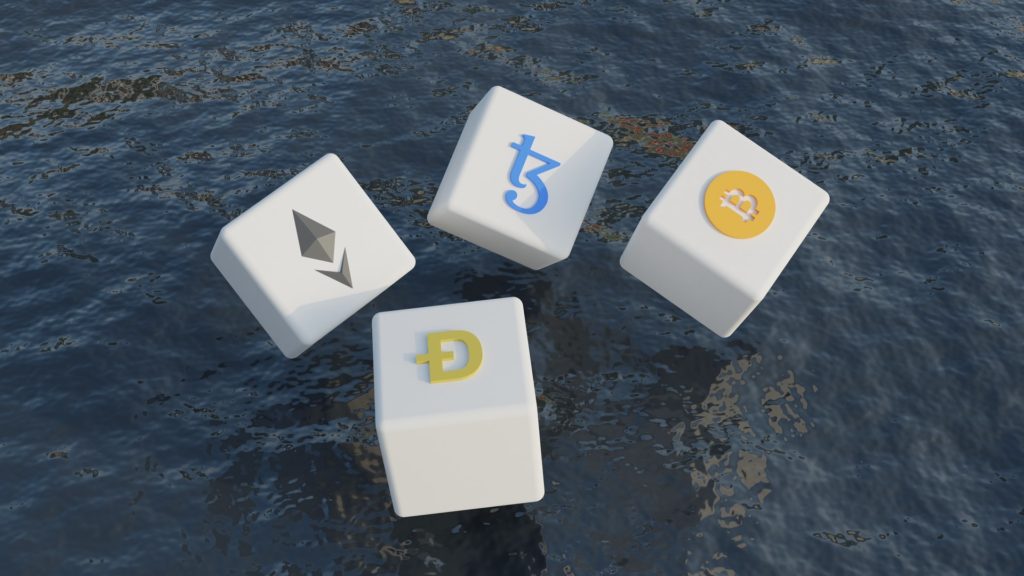Table of Contents
When it was first introduced in 1983, the internet took the world by storm. The Internet is a global computer network that allows people to share a wide range of information. It also makes communication easier because the internet is a vast network of computers connected all over the world.
The terms “internet” and “web” are frequently used interchangeably. That couldn’t be further from the truth. The internet is a computer network that connects computers all over the world, and the web runs on it. The introduction of the Internet triggered a snowball effect.
Tim Berners-Lee introduced the web six years later in 1989. Web 1.0 was the first version of the internet, and it primarily consisted of personal web pages that were mostly static in nature. The static pages were hosted on web servers managed by ISPs or on free web hosting services.
Web 2.0: Participative Social Web

Dale Dougherty defined the second generation of the Web, popularly known as Web 2.0, in 2004 as the “read and write web.” The previous generation of the Web was referred to as “Read-only Web.” Tim O’Reily claims that the change to the internet as a platform and an effort to comprehend the guidelines for success on the new platform are the causes of the commercial revolution known as Web 2.0 in the computing industry.
Web 2.0 is sometimes referred to as the social participatory web. Web 2.0 refers to the way web pages are designed and used, with no changes to the technical specifications. Web 2.0 allows interaction and collaboration with individuals in a social media dialogue as the creator of user-generated content in a virtual community. Web 2.0 is a more sophisticated version of Web 1.0.
Web 2.0 includes a variety of online tools and platforms through which people can share their perspectives, opinions, thoughts, and experiences. Web 2.0 applications interact with the user more. With the advent of Web 2.0, new activities such as podcasting, blogging, tagging, social bookmarking, social networking, social media, and so on were born.
Web 3.0: The Semantic Web

The web is evolving as technology evolves and penetrates almost every sector of the world. Web3.0 is regarded as an advancement in web usage as well as interaction, which includes transforming the Web into a database. Web 3.0 emphasizes data sharing rather than ownership. Web 3.0, also known as “The Semantic Web,” aims to establish information on the web in a more reasonable manner than Google. Web 3.0 emphasizes individual focus over previous versions, which emphasized company and community focus.
The central tenet of Web 3.0 is decentralization. The centralization of the Web has given some companies in charge of running the Web hegemony, which has frequently been rigid as people enjoyed the new technology that was being offered to them. The decentralization of the web benefits crypto markets by making the transition to a decentralized network much easier. Crypto would contribute to the solution by coordinating decentralization and providing incentives for development.
Web 2.0 has also seen the demise of privacy, with cyber attacks serving as its bane. Hacking and data theft have become serious issues in the Web 2.0 era. However, Web 3.0 ensures data privacy. The foundations of Web 3.0 are being laid, but issues persist as Web 3.0 startups seek agreements from companies centered on the Web 3.0 protocol.
As the world digitizes its operations, Web 3.0 will play an important role. Computers are taking over the world and mimicking some of the concepts that people use in real life. One such thing that the digital world is attempting to imitate is the registry. The blockchain is a decentralized ledger that stores information about the user’s transactions.
The core principle of decentralization in Web 3.0 enables blockchain, NFTs, cryptocurrencies, metaverse, and other technologies. Because artists are interested in selling their art digitally as NFTs for which they can be paid using cryptocurrency or fiat currency, the advent of web 3.0 has helped NFT become an avenue for budding artists.

Using smart contracts or the blockchain, people can create their own organizations without a central authority. Decentralized Authority Organization is the name given to this organization (DAO). Brands are also jumping on board with this trend.
The interconnectedness of NFTs, crypto, blockchain, metaverse, and other avenues greatly simplifies Web 3.0 operability.
Blockchain has become one of humanity’s most admired inventions. However, because of its centralized setup, Web 2.0 has limited its functionality. Blockchain is expected to be transformed by Web 3.0. Blockchain technology, according to Aniket Jindal, is increasingly being used in traditional sectors to leverage security and open mechanisms.
Another avenue opened up by Web 3.0 is the metaverse. Metaverse has become a buzzword as an extension of the expansive nature of Web 3.0. A virtual world in which people can explore digitally fabricated environments through the use of virtual reality, augmented reality, or mixed reality devices. The gaming industry has paid close attention to the metaverse as a sector.

The foundation of blockchain and cryptocurrency technology is said to be decentralized ledger technology (DLT). The DLT enables Web 3.0’s cohesive and machine-driven smart contracts. The goal of decentralized technologies is to create an open and secure network in which data breaches, manipulation, and alteration become more difficult, making it less vulnerable to fraudulent activities.
Transactions on the ledger are accompanied by an immutable cryptographic signature known as a hash. This allows the tokens to communicate with one another, resulting in a safe, secure, and decentralized ecosystem for trading digital currency. Furthermore, firms can use native tokens to create their own strong community, which will be a part of various major discussions and will have decision-making power via the tokens. Tokens can also have utility, allowing users to make decisions and participate in discussions.
This allows users to have a say in important company decisions while also facilitating the community-run concept. Prior to blockchain and Web 3.0, the idea of decentralized autonomous organizations seemed far-fetched. However, with the rapid development of Web 3.0, many organizations are now exploring this infrastructure to have a strong community of like-minded individuals who are all willing to expand and grow the company further.
The world is changing at a rapid pace, and the COVID standards are being quickly and widely adopted. The COVID-19 pandemic has caused the world to become digital natives. Decentralization, as a central feature of Web 3.0, contributes to its transparency and interoperability.
Final Thoughts
Web 3.0 has generated a lot of buzz, but it also backs up that buzz. The use cases are numerous, as is the ability to easily enable all of the latest technology while connecting them in such a way that all of the products are interoperable. Web 3.0 represents a massive opportunity. Even though it is still in its early stages, there have been numerous developments. The sky is the limit once it is fully enabled.
Disclaimer: The opinion expressed here is not investment advice – it is provided for informational purposes only. It does not necessarily reflect the opinion of EGG Finance. Every investment and all trading involves risk, so you should always perform your own research prior to making decisions. We do not recommend investing money you cannot afford to lose.
 English
English Français
Français Español
Español Bahasa Indonesia
Bahasa Indonesia 中文 (中国)
中文 (中国) Русский
Русский Português
Português Deutsch
Deutsch

